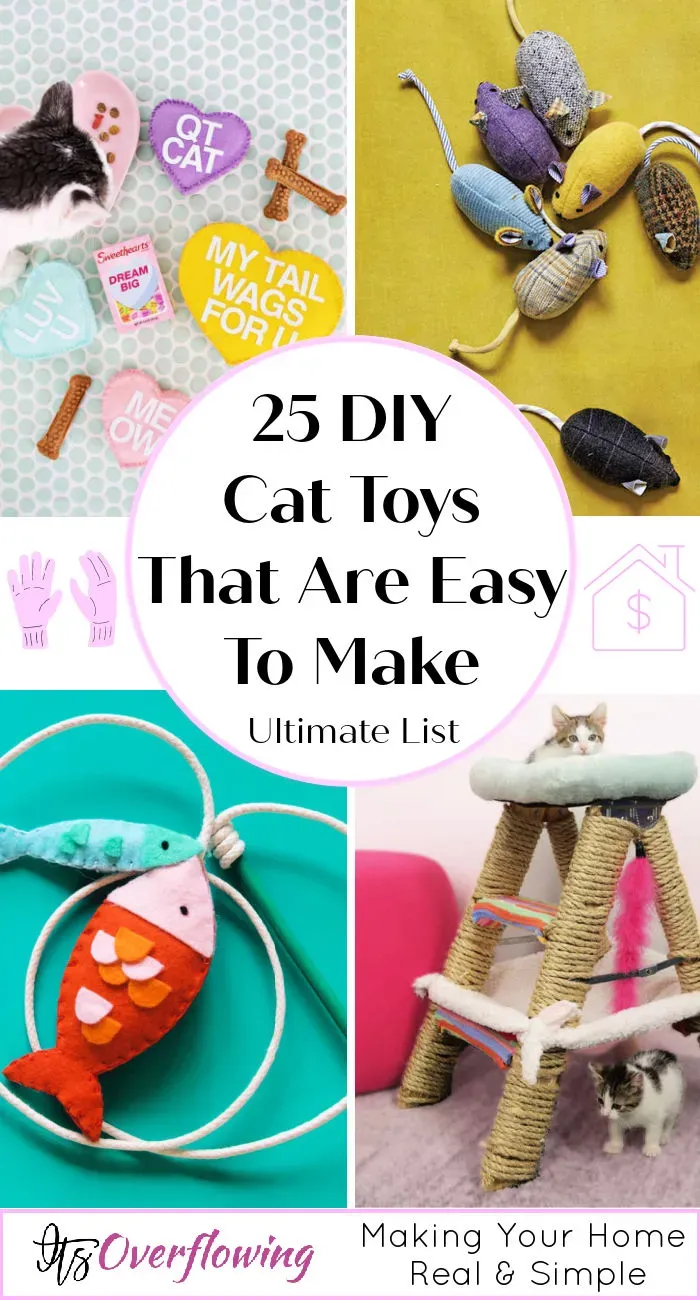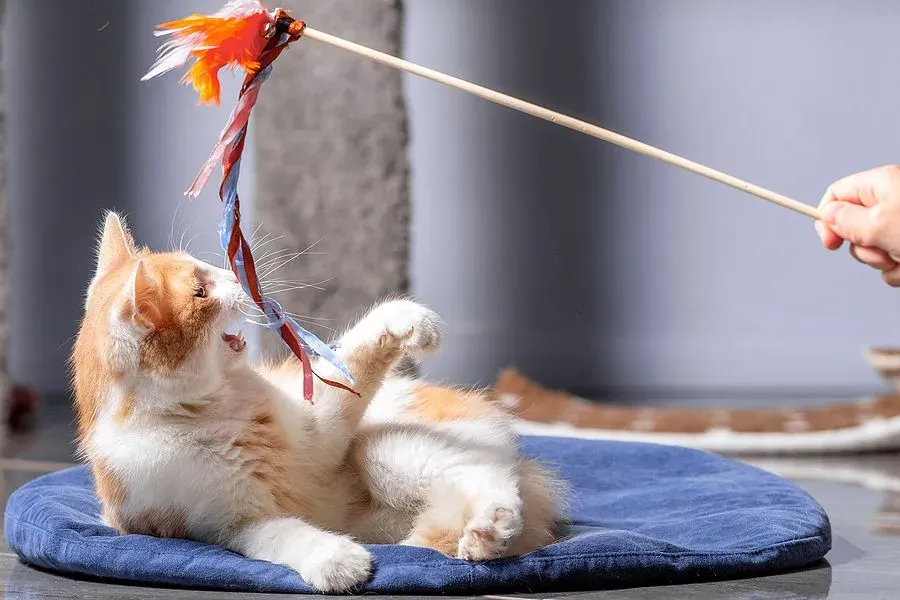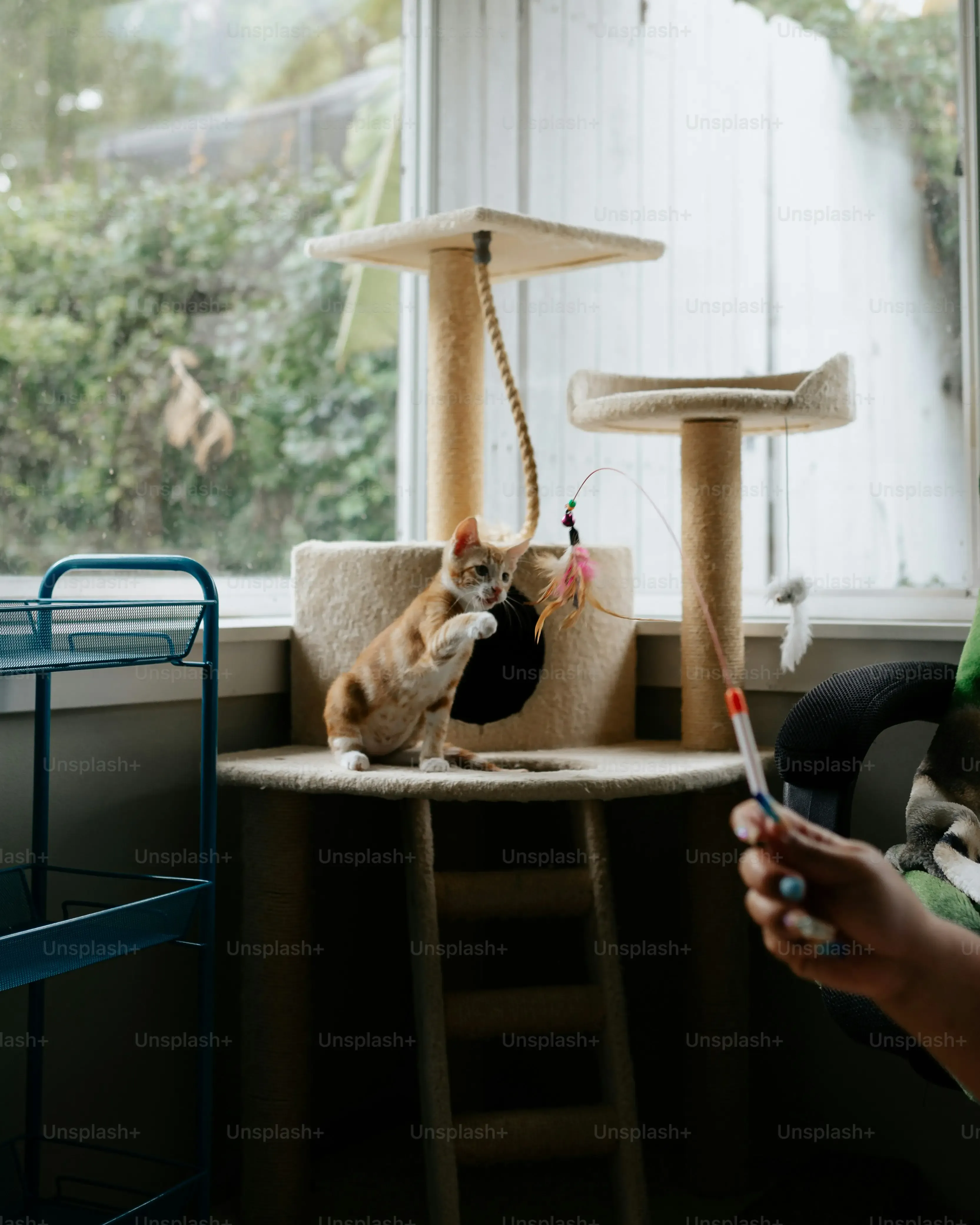Table of Contents
Let's be honest. You walk into a pet store, intending to grab some cat food, and somehow walk out having spent fifty bucks on a squeaky mouse that will be dismembered in approximately 37 seconds. Your cat looks at you with those big, innocent eyes, then promptly ignores the expensive new gadget in favor of the plastic ring from a milk jug. Sound familiar?
Why Make a Homemade Cat Toy? Save Money, Keep Cats Happy

Why Make a Homemade Cat Toy? Save Money, Keep Cats Happy
So, you're thinking about diving into the world of DIY cat toys? Excellent choice. Beyond the obvious win for your wallet – seriously, cat toys cost way more than they should for something that's essentially a felt mouse on a stick – there's a real benefit for your cat. Why Make a Homemade Cat Toy? Save Money, Keep Cats Happy isn't just a catchy phrase; it's the truth. Store-bought toys can get boring fast, but homemade ones, especially those made from everyday objects, often tap into a cat's natural hunting instincts in ways mass-produced items can't. Think about it: that crinkly wrapper or wobbly box offers unpredictable movement and textures, mimicking prey better than a static plush toy. Plus, the sheer variety you can create keeps things fresh, preventing boredom and providing essential mental and physical stimulation that prevents your cat from deciding your couch is the next great scratching post.
Safety First: What to Avoid When You Make a Homemade Cat Toy

Safety First: What to Avoid When You Make a Homemade Cat Toy
Tiny Bits Are Trouble
so you're ready to craft, which is great. But before you go gluing googly eyes onto a toilet roll tube, let's talk about what *not* to use. Cats are basically tiny, furry piranhas with a penchant for batting things into oblivion and then, sometimes, attempting to eat them. Anything small that can easily break off is a potential choking hazard or, worse, something that ends up lodged in their digestive tract. Think buttons, beads, sequins, small bells, or even bits of fluff from cheap stuffing.
If it's smaller than your cat's mouth, assume they will try to swallow it. That cute little button eye on your felt mouse? A disaster waiting to happen. When you make a homemade cat toy, durability is key. Pull, prod, and test every element to make sure it's securely attached and won't become a snack.
String Theory (and Why It's Dangerous)
Ah, string. Cats love it. They'll chase it, bat it, and carry it around like the world's most exciting snake. And that's the problem. Linear objects like string, yarn, ribbon, thread, or even elastic bands are incredibly dangerous if ingested. Unlike a solid object that might pass or get stuck in one spot, string can bunch up in the intestines, causing what vets call a "linear foreign body."
Imagine pulling a drawstring through a gathered piece of fabric – that's what happens inside your cat. It can saw through tissue, cause blockages, and requires emergency surgery. Seriously, it's a nightmare. So, while a dangly string might seem like the ultimate cat lure, skip it unless you are actively supervising play and put the toy away immediately afterward.
- Small objects (buttons, beads, sequins)
- Loose strings, yarn, ribbon, thread
- Elastic bands
- Sharp edges or points (staples, exposed wire)
- Toxic materials (certain paints, glues, or fabrics)
- Anything easily shredded into tiny ingestible pieces
Nasty Materials and Sharp Surprises
Beyond the swallowable stuff, watch out for materials that could be toxic or cause injury. Some glues and paints aren't pet-safe once dry, let alone when wet. If you're decorating a cardboard box or tube, make sure you're using non-toxic options, like simple white school glue or pet-safe paints if you must paint at all. Marker ink isn't ideal either.
Also, be mindful of sharp bits. Staples in cardboard, exposed ends of wire (like from coat hangers used in tunnels), or rough, splintery wood can cause cuts or punctures. The whole point of learning how to make a homemade cat toy is to provide safe fun, not send your furball to the emergency room. Inspect your creations thoroughly before handing them over for playtime.
Easy Wins: How to Make a Homemade Cat Toy with Household Junk

Easy Wins: How to Make a Homemade Cat Toy with Household Junk
The Mighty Cardboard Tube
so you’ve successfully navigated the minefield of tiny death traps and linear intestinal nightmares. Good job. Now, let’s get to the fun part: raiding your recycling bin. Seriously, the humble cardboard tube, be it from toilet paper or paper towels, is a feline goldmine. Learning how to make a homemade cat toy doesn't get much simpler than this. Your cat already bats these things around. Elevate the game slightly. You can simply fold in the ends to make a treat dispenser – pop a few kibbles or tiny treats inside, fold the ends over, and let your cat figure out how to get them out. It’s a puzzle, it’s noisy, and it costs exactly nothing.
Socks, Shirts, and Scraps
Got an old sock with no mate? A t-shirt past its prime? Fabric scraps from a long-forgotten project? Perfect. Avoid anything with loops or loose threads your cat could get tangled in, but a simple sock can be stuffed with other fabric scraps or crumpled paper (for that satisfying crinkle sound) and tied off securely. No sewing required. Just make sure the filling is safe and the tie is tight. Cats love the texture and the fact that it often smells faintly of you. It’s like a tiny, portable wrestling buddy.
- Cardboard Tubes (toilet paper, paper towel)
- Old Socks
- Fabric Scraps (cotton is good)
- Crumpled Paper (check for staples or tape)
- Empty Cardboard Boxes (varying sizes)
- Plastic Bottle Rings (ensure no sharp edges)
The Ever-Popular Box
If you’ve ever ordered anything online, you have the ultimate cat toy. The box. Any box. Big, small, medium – cats don't discriminate. Learning how to make a homemade cat toy can sometimes involve zero crafting whatsoever. Just put the box on the floor. Watch the magic happen. They will sit in it, on it, attack it, hide in it. If you want to get fancy, cut some extra holes in it to create new entry and exit points, turning it into a mini-fort or ambush spot. Just ensure the tape is removed and there are no staples sticking out. It's bafflingly simple, yet universally loved by cats. Sometimes the best toys aren't toys at all, just opportunities for feline weirdness.
Get Crafty: More Advanced Ways How to Make a Homemade Cat Toy

Get Crafty: More Advanced Ways How to Make a Homemade Cat Toy
so you've mastered the art of the cardboard tube and the stuffed sock. Your cat is mildly amused, but you're feeling ambitious. You want to go beyond simply presenting junk and actually *make* something. This is where learning how to make a homemade cat toy gets a little more involved, but still totally doable without needing a craft degree. We're talking about simple sewing projects, basic construction with safe adhesives, and turning seemingly useless items into feline playgrounds. Think fabric scraps becoming tiny catnip-filled mice, old t-shirts braided into tug toys, or PVC pipes transformed into treat puzzles.
Keeping Play Exciting: Rotating and Refreshing Your DIY Cat Toys

Keeping Play Exciting: Rotating and Refreshing Your DIY Cat Toys
The Dreaded Toy Boredom
So, you've dedicated an afternoon to mastering how to make a homemade cat toy. You've crafted a cardboard tube dispenser worthy of an art gallery and sewn a mouse that looks suspiciously like a dust bunny. Your cat goes nuts for them for a solid 48 hours. Then? Crickets. The toys sit there, ignored, gathering dust bunnies of their own. It’s not a personal insult, though it feels like one. Cats, like small, easily distracted humans, get bored. Fast. The novelty wears off, the hunt loses its thrill, and suddenly that brilliant creation is just... furniture.
Keeping Play Exciting: Rotating and Refreshing Your DIY Cat Toys is crucial because a stagnant toy collection leads to a stagnant cat. A bored cat is a cat looking for *other* things to do, like scaling your curtains or critiquing the structural integrity of your sofa with their claws. Preventative maintenance in the form of toy rotation is far less painful (and expensive) than repairing upholstery.
The Toy Rotation System
Think of yourself as a museum curator for tiny predators. You wouldn't display every single artifact all the time, would you? No, you rotate the collection to keep visitors interested. Do the same for your cat. Gather all the glorious homemade (and store-bought) toys you possess. Divide them into two or three groups. Keep one group out for your cat to access. Hide the others away in a closet or a box where your cat can't see or smell them.
Every week or two, swap them out. Put the current batch away and bring out a 'new' set. To your cat, these forgotten toys will suddenly seem exciting again, as if they've just appeared out of nowhere. It's a simple trick, but remarkably effective at breathing new life into tired playthings without needing to constantly churn out new ones.
What's the point of making all these great toys if your cat just ignores them after two days?
Refresh, Recharge, Re-Catnip
Rotation is step one, but sometimes toys need a little pick-me-up. This is where refreshing comes in. Did you make a fabric toy ages ago? Rub some fresh catnip on it. The scent fades over time, and a little sprinkle can make an old toy feel brand new and irresistible. For cardboard toys, you can slightly alter them – cut a new hole in the box, fold the tube ends differently, or add a new texture element (like securely gluing a piece of rough twine). For wand toys (use supervision, remember string danger!), swap out the dangly bit. Use a different feather, tie on a piece of crinkly material, or attach a stuffed mouse. Small changes can make a big difference, stimulating your cat's senses and curiosity all over again.
Your Cat's New Favorite Toy Might Be Trash
So there you have it. Before you click "add to cart" on another plush mouse destined for oblivion, take a look around your house. That empty paper towel roll, that discarded sock with a missing mate, that cardboard box from your latest online shopping spree – these aren't just garbage. They are potential goldmines of feline entertainment, waiting for you to learn how to make a homemade cat toy. You save money, reduce waste, and provide your cat with stimulating, instinct-satisfying play. It might not look fancy, but sometimes, the simplest things are exactly what your discerning companion truly appreciates. Go on, get creative. Your cat's next moment of pure, unadulterated joy might just come from something you pulled out of the recycling bin.